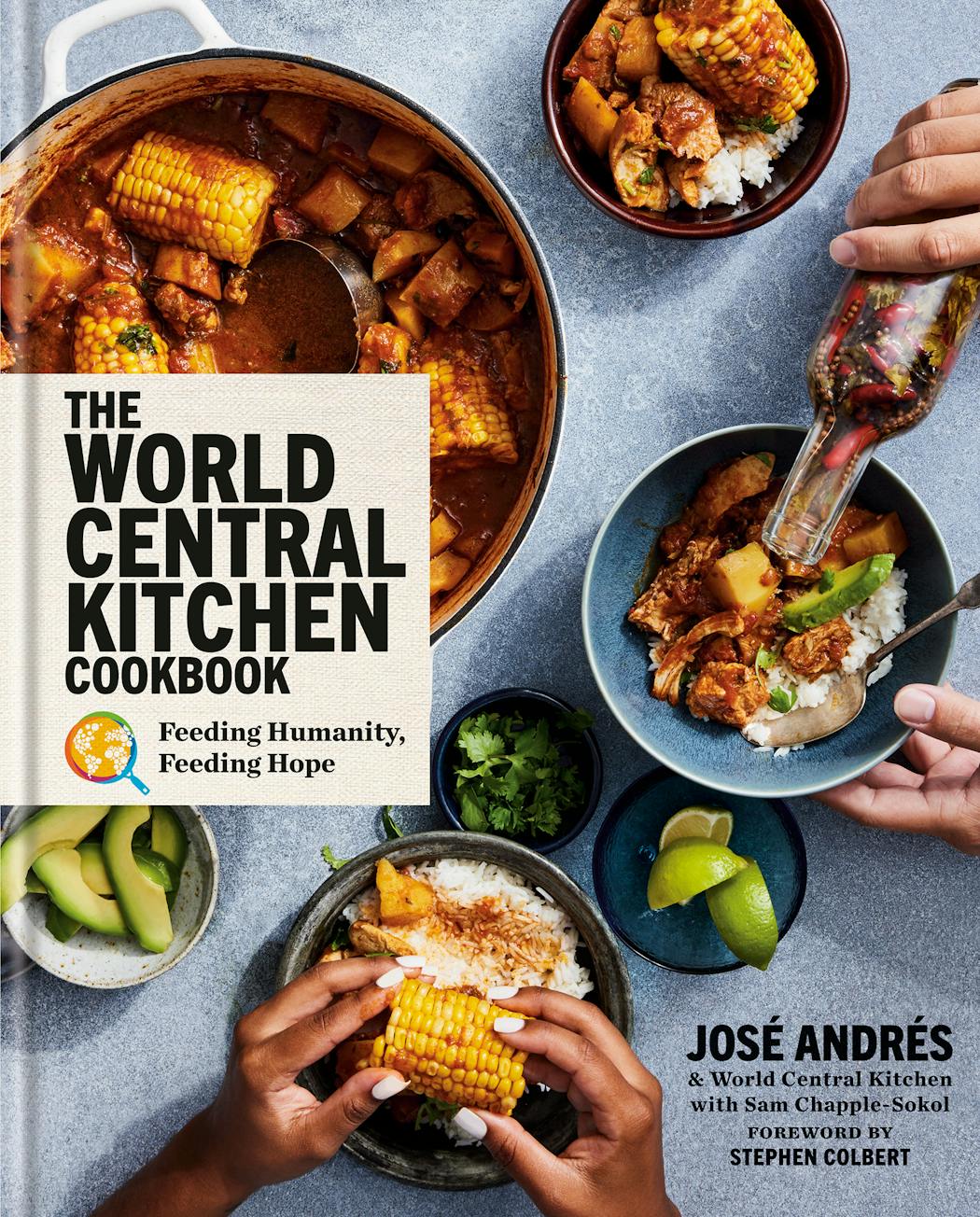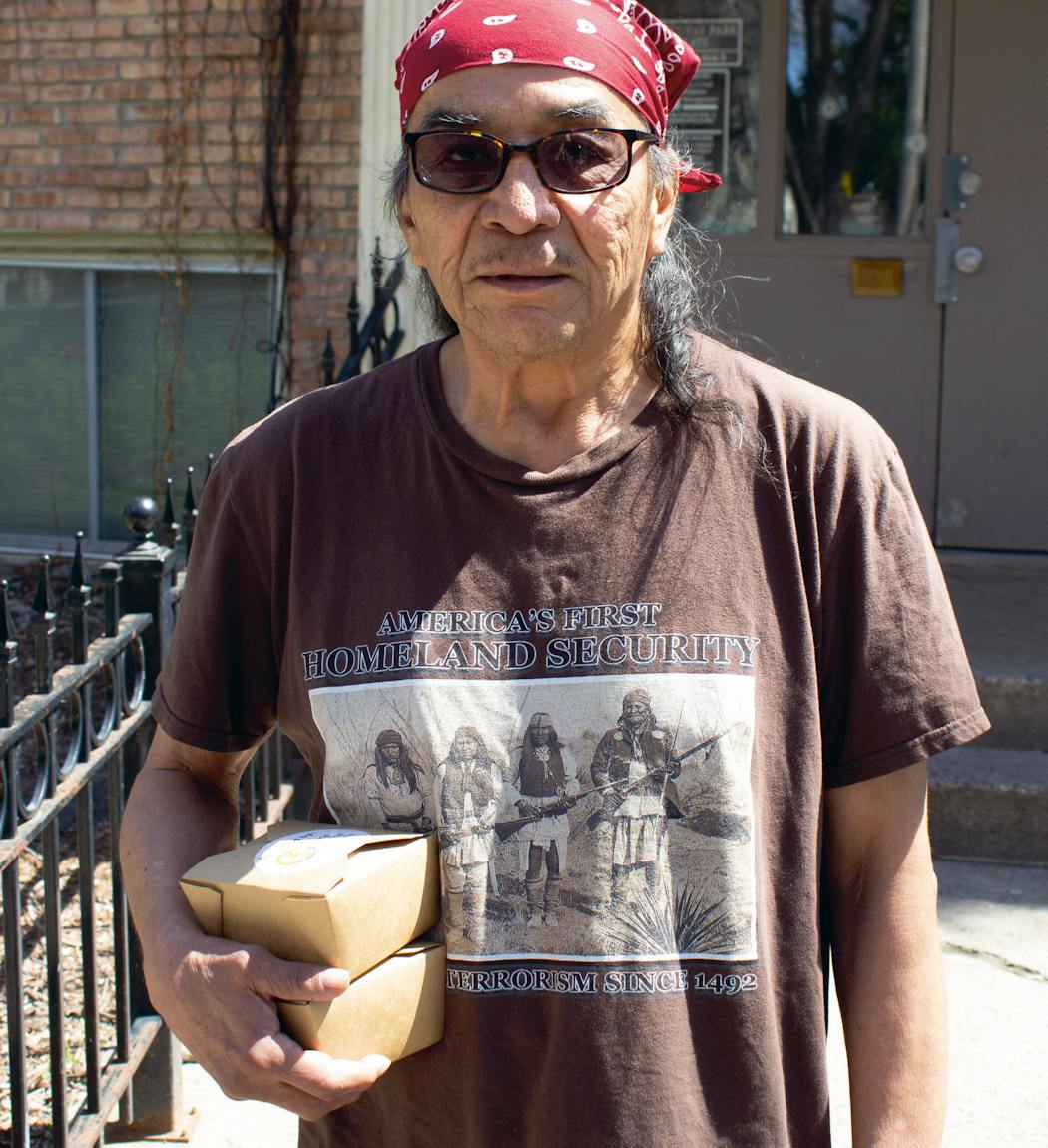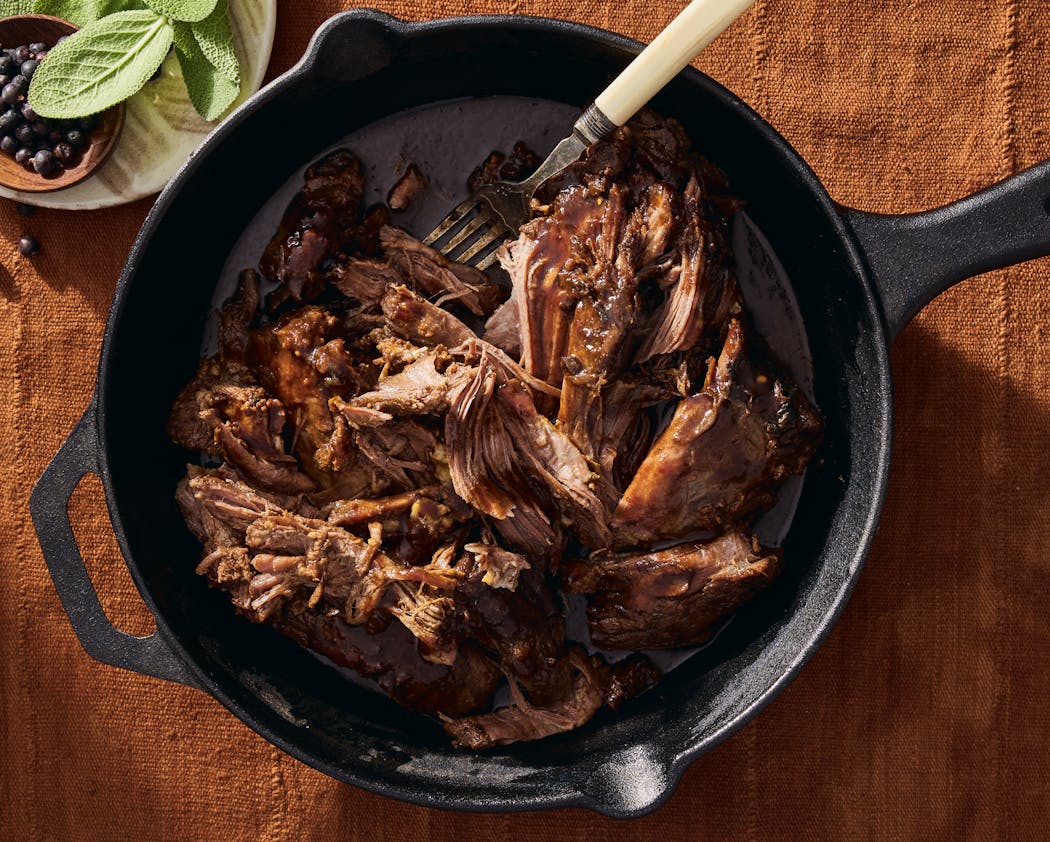When disaster strikes, José Andrés is ready.
For more than a decade, the award-winning chef and his army of volunteers have been on the front lines, feeding communities impacted by natural disasters and humanitarian crises through his World Central Kitchen nonprofit.
What started as one man's vision is now a network of chefs that has prepared more than 300 million meals worldwide. The World Central Kitchen's Chef Corps has hundreds of willing cooks in dozens of countries ready to deploy as the needs arise.
One of those chefs is St. Paul's Brian Yazzie, who during the pandemic started the Feed Our Elders program through the Minneapolis American Indian Center. Then the chef at the center's Gatherings Cafe, Yazzie and his team would deliver up to 300 meals a day, emphasizing Indigenous ingredients and healthy cooking.
Yazzie also is among the chefs featured in the new "The World Central Kitchen Cookbook: Feeding Humanity, Feeding Hope" (Clarkson Potter, $35). The book is a collection of stories and recipes from volunteer chefs like Yazzie, celebrity supporters and local cooks from areas they've served.
Much like Andrés' nonprofit, the book has a mission: to feed and educate. Chapters are organized by WCK's values — Empathy, Urgency, Adaptation, Hope, Community, Resilience and Joy — and Andrés' portion of the proceeds goes back to WCK. Yazzie's recipe, for Sage and Agave Braised Bison, appears under Empathy, along with other braises and long cooks. "When things look the darkest, the best of humanity really shines through," Andrés wrote in the chapter introduction. "Without empathy, nothing works."
We caught up with Yazzie via email about his work with World Central Kitchen, the resurgence of Native cooking and how he landed in Minnesota. The conversation has been edited for length and clarity.
Q: You opened Gatherings Cafe at the start of the pandemic as restaurants were forced to close but transitioned to the Feeding Our Elders program. How did that, and your involvement with WCK, come about?
A: From the beginning of the pandemic, I wanted to help the BIPOC community with providing healthy Indigenous foods. Respectfully, a healthy alternative was needed, especially for those whose immune systems and means of travel are compromised. I was hired as an executive chef as a friend of mine, Ben Shendo, was exiting. As a transition, we shifted from a traditional cafe to a community kitchen, serving BIPOC elders in the Twin Cities area. We served an average of 800 to 1,200 meals a week the first six months.
The focus [of Feeding Our Elders] was to care for our elders within our urban community. When I heard the cafe was searching for a chef to lead a potential program, I took the opportunity and started with a grant from Blue Cross Blue Shield Minnesota, which helped for the first couple of months. After realizing we needed more support, I reached out to a friend I admire in the food service industry, Nate Mook [former CEO of World Central Kitchen]. I met Nate a couple of years ago at a symposium in Denmark; I attended Nate's presentation on the work WCK was doing. We exchanged info and stayed connected via social media.
When I reached out to Nate for possible support, without hesitation Nate and WCK wanted to support our program.
Q: Another goal of Feeding Our Elders was to reintroduce Native ingredients. How was the program received?
A: Our main focus was to highlight and provide comfort foods with healthy alternatives. For example, we excluded fried foods and highly processed foods. We utilized natural sweeteners like agave, honey and, of course, maple. The elders were always very honest and straightforward on their feedback. So, we tried to meet their requests halfway as we held onto our integrity and philosophy with Indigenous food cultures.
Q: Are you still involved with the programs?
A: I am currently back to working under my own name and catering company, Intertribal Foodways, and in a collaborative partnership with an in-flight catering company based out of California. With Intertribal Foodways, my niece, Ida Jose [Fort Yuma Quechan Indian/Mexican], is my sous chef and we travel nationally and internationally, providing catering to conferences, powwows, pop-ups, private events and presentations on Indigenous food cultures of North America. With in-flight catering, we implement and provide contemporary Indigenous appetizers and entrees in addition to requested menu items.
Q: Is Intertribal Foodways a continuation of your work or an evolvement of it?
A: My wife and I started Intertribal Foodways in 2016, the year I graduated from St. Paul College's Culinary Arts program. We started with a simple vision of a local catering company, but we didn't know the traction it would receive nationally. So, we expanded our community services and projects to presentations, demos, workshops and menu consultations. Today, we are still active.
I have been working on an Intertribal Foodways cookbook for a couple of years, and I'm not rushing it. In this industry, you have to protect your spirit and for that reason I move a certain way, controlling my own projects and destiny for the community.
Q: Growing up in Arizona, you have credited food and cooking with saving your life. Who are your biggest influences?
A: The matriarchs in my family and in tribal communities are my biggest influences and mentors. Especially my mother and mother-in-law. They are a testament of boarding school survival and resiliency in carrying our Diné [Navajo] culture and traditions. My first language is Diné and second is English, I try to uphold our tribal values with the utmost respect.
Q: What brought you to Minnesota?
A: My wife and I moved to Minnesota in 2013. We wanted to move to a new place and start fresh with new opportunities. During that time we were in a place where we weren't moving forward as a couple or career-wise. The tribal and ally communities have welcomed us and still support us. We have made lifelong families, friendships and allies.
Q: How did you choose which recipe to include in the WCK cookbook?
A: I wanted to highlight one of our popular protein dishes at the cafe. Bison meat is very versatile and flavorful. For our Plains tribal communities, bison isn't just a food source, it is medicine for the soul. Traditionally, an entire bison is used after butchering — for food, clothing, housing, storing and ceremonial proposes. For this recipe, we sourced from Cheyenne River Buffalo Co. in South Dakota.
Q: What's your favorite ingredient to work with?
A: Personally, I love working with corn. The versatility of corn means endless creativity. From entrees to desserts, we highlight it in our caterings and presentations.
Q: Native cuisine has been getting a lot of attention. Have you seen a resurgence in cooks wanting to get back to basics?
A: Our beautiful food cultures of North America have always been here. Scholars and farmers have influenced the recent recognition of Indigenous foods via cooks and chefs like myself. Some of us are grounded in community work, and some of us are in different avenues in the industry, but our goals are to represent our food cultures. I do my best to move appropriately, as I keep my ears to the urban and tribal back roads and always have time to sit, listen and learn from an elder.
Q: What's next?
A: I am currently working on a couple of grants for a food truck concept, which will be announced soon — hopefully early next year.
Yazzie's Sage and Agave Braised Bison
Serves 6.
American bison, called tatanka in the Lakota language of the Upper Great Plains, was nearly hunted to extinction by American colonists. Now, though, Indigenous chefs like Brian Yazzie (Diné/Navajo) compare bison's resilience to that of tribal communities. The U.S. bison population has rebounded from just over 500 in the late 19th century to 500,000 today. Yazzie's recipe for bison, which uses other Indigenous ingredients like fresh sage and dried juniper berries, is beautifully sweet and savory with a faint herbal earthiness. There are farms that specialize in bison meat throughout the country — a little online research pays off; plus you'll be supporting small farmers and the future of an animal that's been around for more than 10,000 years. From "The World Central Kitchen Cookbook," by José Andrés.
• 1/4 c. kosher salt, plus more to taste
• 1/4 c. onion powder
• 1/4 c. garlic powder
• 1/4 c. sweet paprika
• 8 fresh sage leaves, minced
• 1 c. sunflower oil, divided
• 1 (4- to 5-lb.) bison chuck roast
• 2 medium red or white onions, peeled and quartered
• 5 medium cloves garlic, peeled
• 6 juniper berries
• 1/2 c. agave syrup
• 4 to 6 c. vegetable stock
Directions
In a medium bowl, combine the salt, onion powder, garlic powder, paprika and sage. Rub 2 tablespoons of the oil over the bison roast and carefully massage the seasoning mix over it, making sure to get it in the nooks and crannies. You may not need all the seasoning mix to get a nice even layer all over the meat. (If you have any left over, add yogurt or sour cream and some buttermilk for a respectable ranch dressing!) Wrap the bison tightly in plastic wrap, put it in a large bowl or baking pan, and place in the fridge at least 8 hours or up to overnight.
In a large Dutch oven, heat 1/4 cup of the oil over medium-high heat. Add the onion quarters and sauté until they start to soften, stirring regularly, 8 to 10 minutes. Add the garlic and juniper berries and sauté just until fragrant, about 30 seconds. Transfer it all to a bowl, mix in the agave, and set aside.
When ready to prepare, preheat the oven to 200 degrees.
Remove the bison roast from the fridge and unwrap. Add the remaining 10 tablespoons oil to the Dutch oven and heat over medium-high heat until shimmering. Sear it for 1 to 2 minutes on each side — if it starts to char or burn, turn it until seared and golden brown on all sides.
Add the onion-agave mixture and enough stock to reach halfway up the bison roast, cover the pot with a sheet of foil, and place the lid on tightly.
Place the roast in the oven and braise until when you stick a fork into the thickest part, the meat is tender enough to be shredded. Begin checking for tenderness after 6 hours; if it isn't tender at that point, re-cover with the foil and lid and braise up to 3 hours longer, checking the tenderness every 30 minutes.
Using tongs and a large spoon, carefully transfer the roast to a big bowl. Shred the meat and taste it, adding salt if needed. If you like, turn the stock into a pan sauce to serve with the bison. Simply strain the stock, skim off any fat (there will be a lot of excess oil), and boil the skimmed stock for another 45 minutes, until it's about three-quarters of its original volume.
Wild onion dinners mark the turn of the season in Indian Country
California Disney characters are unionizing decades after Florida peers. Hollywood plays a role
Pope visits Venice to speak to artists and inmates and finds a city taxing day-trippers like him





